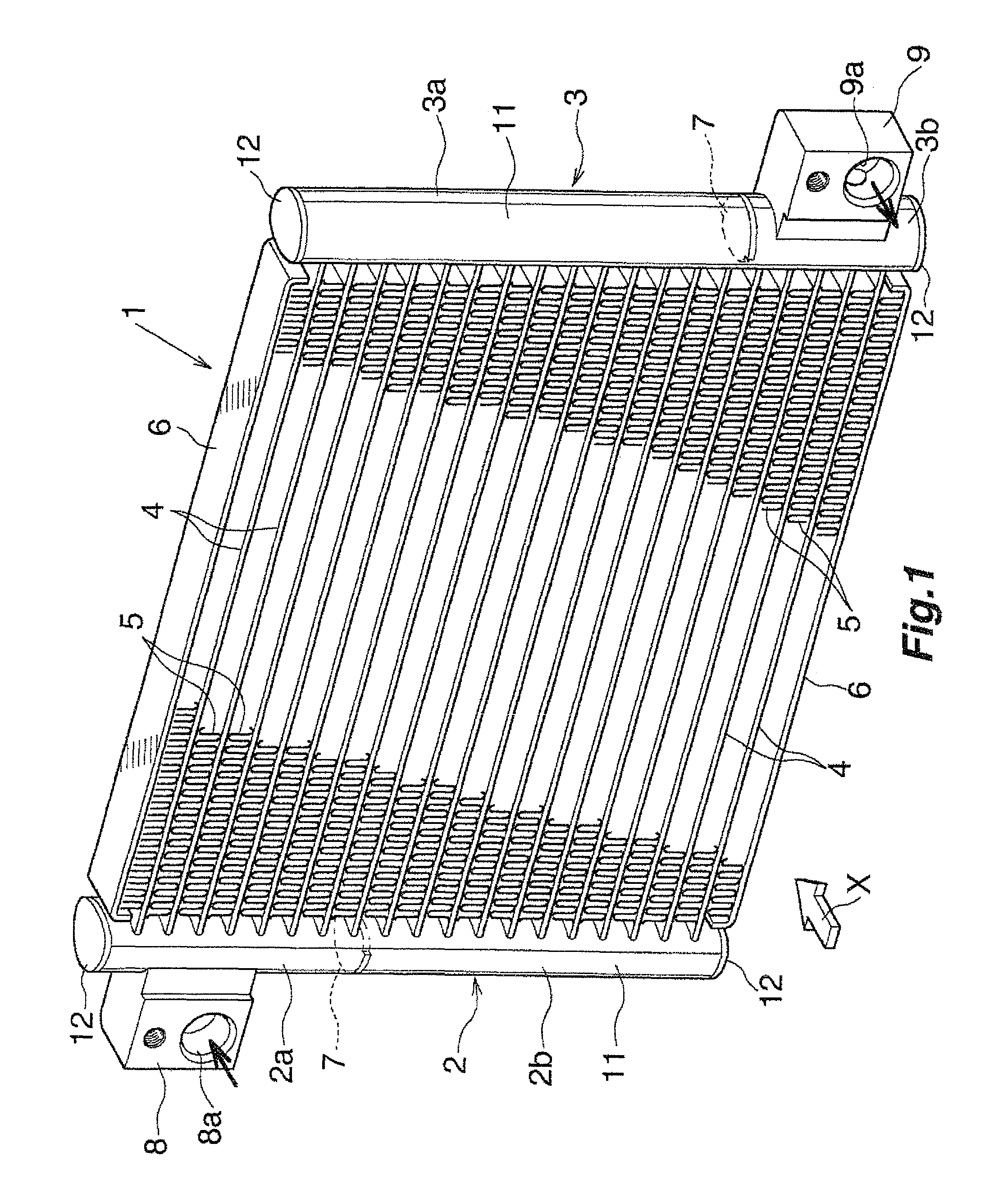Method for anticorrosion treatment of outer surface of heat exchange tube made of aluminum extrusion and method for producing heat exchanger
a technology of heat exchange tube and aluminum extrusion, which is applied in the direction of manufacturing tools, soldering devices, light and heating equipment, etc., can solve the problems of excessive increase in the ratio of the thickness of the zn diffusion layer to the thickness of the wall of each heat exchange tube, and achieves uniform thickness, enhanced pit corrosion resistance of the heat exchange tube, and relatively small thickness
- Summary
- Abstract
- Description
- Claims
- Application Information
AI Technical Summary
Benefits of technology
Problems solved by technology
Method used
Image
Examples
example 1
[0058]An aluminum extruded heat exchange tube was formed from an alloy composed of Mn 0.25 mass %, the balance being Al, and unavoidable impurities, and having a Cu content of 0 mass % and a Fe content of 0.2 mass % or less, Cu and Fe being unavoidable impurities. The heat exchange tube had a transverse cross section shown in FIG. 2 and a width of 12 mm, a length of 650 mm, and a maximum wall thickness of 200 μm. Separately, corrugated fins were formed from a brazing sheet having a thickness of 70 μm and made of an aluminum core composed of Si 0.45 mass %, Mn 1.5 mass %, and Zn 1.5 mass %, the balance being Al, and unavoidable impurities, and a cladding formed of an aluminum braze which is formed of Si 8.7 mass %, the balance being Al, and unavoidable impurities and which covers both surfaces of the core.
[0059]There were provided a fluorine-containing, non-corrosive flux powder (containing ≧90 mass % of a mixture of KAlF4 and KAlF5 (KAlF5 content: 10 to 40 mass %)), a Zn powder havi...
example 2
[0065]The same heat exchange tubes, corrugated fins, non-corrosive flux powder, Zn powder, binder, and diluent as employed in Example 1 were provided. Then, the Zn powder and the non-corrosive flux powder were dispersed in the binder and the diluent, to thereby prepare a dispersion. The dispersion was found to have compositional proportions by weight; Zn powder:non-corrosive flux powder:binder:diluent of 6.7 parts by weight:40.0 parts by weight:35.6 parts by weight:17.8 parts by weight.
[0066]Subsequently, each of the heat exchange tubes was heated to a substantial temperature of 40° C., and the dispersion was applied onto the outer surface of the heat exchange tube through roller coating. The tube was dried in a drying apparatus, to thereby vaporize the liquid component of the dispersion. As a result, the Zn powder and the flux powder were deposited on the outer surface of the heat exchange tube, such that the Zn powder deposition amount was adjusted to 1 to 3 g / m2, the flux powder ...
PUM
| Property | Measurement | Unit |
|---|---|---|
| thickness | aaaaa | aaaaa |
| particle size | aaaaa | aaaaa |
| particle size | aaaaa | aaaaa |
Abstract
Description
Claims
Application Information
 Login to View More
Login to View More - R&D
- Intellectual Property
- Life Sciences
- Materials
- Tech Scout
- Unparalleled Data Quality
- Higher Quality Content
- 60% Fewer Hallucinations
Browse by: Latest US Patents, China's latest patents, Technical Efficacy Thesaurus, Application Domain, Technology Topic, Popular Technical Reports.
© 2025 PatSnap. All rights reserved.Legal|Privacy policy|Modern Slavery Act Transparency Statement|Sitemap|About US| Contact US: help@patsnap.com



